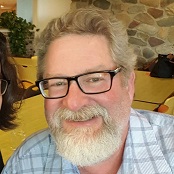|
CI Lab Projects
Funding.
To date, funding for these projects has been provided by an
NSF ITR Award (SnB on the Grid; Grid Application Templates;
Transparent Data Collection on the Grid; Grid Monitoring; Grid Portals)
and an NSF CRI Award (Western New York Grid).
Appropriations for some critical resources have been provided
by Gov. Pataki, Congressman Reynolds, and Senator Clinton.
Further, a wide
variety of support has been provided by the Center for Computational Research.
Fundamental Research
- Core Grid Technology, including the development of secure
and high-performance grid technologies that allow for the integration of
high-end computers, data, networking, and visualization, as well as
sensors, imaging devices, and databases.
- Grid Computing Technology, including the identification and
solution of research and development projects, the implementation of
grid technologies, dynamic resource classification for fast processing
on homogeneous parallel platforms, and the distributed computation for
individual computation tasks on heterogeneous platforms.
- Data Grid Technology, including the development of technology
for building a common core database platform on the grid, the
development of distributed search technology utilizing heterogeneous
databases, large-scale distributed text searching, and intelligent storage
controller development.
- Remote Data Collection Technology, including remote data
collection, analysis, and sharing utilizing high-performance networks and
experimental devices, the remote interaction with high-performance sensors,
and the remote collection system for protein crystallographic structure analysis.
The Cyberinfrastructure Laboratory has enabled the successful porting
and implementation of numerous applications to the grid environment.
- Shake-and-Bake(SnB) - Molecular Structure Determination
Application
- Buffalo-and-Pittsburgh (BnP) - SnB and PHASES Complete
Protein Phasing
- Ostrich - Optimization and Parameter Estimation Tool for Groundwater
Modeling
- Aseismic Design & Retrofit (EADR) - Passive Energy Dissipation System
for Designing Earthquake Resilient Structures
- Princeton Ocean Model Great Lakes (POMGL) - Great Lakes Hydrodynamic
Circulation Model
- Titan - Computational Modeling of Hazardous Geophysical Mass Flows
- Chem - Commercial Quantum Chemistry Software Package
- NWChem - Computational Chemistry Software Package developed and
maintained by DOE
- Split - Modeling Groundwater Flow with the Analytic Element Method
The Cyberinfrastructure Laboratory fosters grid-based collaborations
worldwide
These efforts were supported by approximately $4M in funds from NSF (ITR, MRI, CRI),
as well as support from the
Center for Computational Research
and Open Science Grid.
- ACDC-Grid:
A Buffalo-based grid was established
to gain experience with grid computing, including porting
critical
codes to the grid,
developing a web portal
in order to provide easy access to a grid,
developing a lightweight
grid monitoring system,
and developing a
generalized technique for porting applications to the grid.
- WNY-Grid: This Western New York Grid was designed and implemented in Western New York, including
the The Hauptman-Woodward Medical Research Institute (research institution),
Niagara University (private 4-year college), and
SUNY-Geneseo (public 4-yuear college) to focus on outreach and training.
- NYS Grid: This New York State Grid was deployed as an expansion of the WNY-Grid, bringing grid computing to the desktop of many users throughout the state.
- Open Science Grid.
The Cyberinfrastructure Lab and CCR have worked closely with
the Open Science Grid for a number
of years on a wide range of projects. We appreciate the guidance and assistance
they have provided over the years.
- Grid2003 Grid Monitoring.
The CI Lab's ACDC-Grid Monitor was deployed at SC03 on Grid2003.
- Grid2003 Dynamic Resource Allocations.
The CI Lab's dynamic scheduling system for moving portions of a cluster into
and out of a grid in an automated fashion was deployed at SC03 on Grid2003.
- Grid2003: An Application Grid Laboratory for Science Participants
(10/2003)
- National Laboratories and Supercomputing Centers:
Argonne, Brookhaven, Fermi National Accelerator Laboratory (FNAL),
National Energy Research Scientific Computing Center, San Diego
Supercomputing Center (SDSC), UB Center for Computational
Research
- Universities: Boston, Caltech, Chicago,
Florida/Gainesville, Florida International, Hampton, Indiana,
Iowa, Johns Hopkins, Michigan, New Mexico, Oklahoma, Penn State,
Purdue, Rice, Southern Methodist, Texas/Arlington,
Wisconsin/Madison, Wisconsin/Milwaukee, UC San Diego, Vanderbilt
- International Universities: Academia Sinica (Taiwan),
Kyungpook National University (Korea), National Technological
University (Taiwan)
Note: This material is based upon work supported by the National Science Foundation under Grant Nos. 0204918, 0454114, and 0101244, as well as post-doctoral funding from HP.
Disclaimer: Any opinions, findings, and conclusions or recommendations expressed in this material are those of the author(s) and do not necessarily reflect the views of the National Science Foundation.
|
